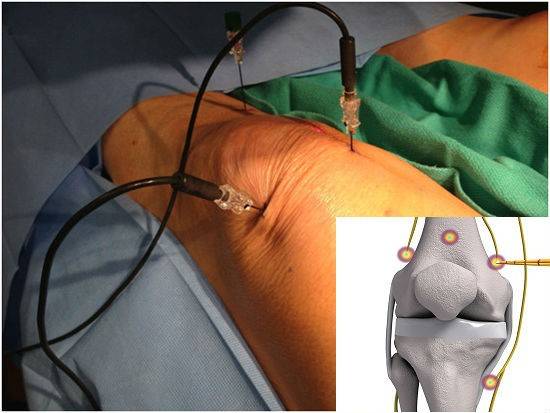Get ready to experience knee replacement in Iran, including the cities of Shiraz and Tehran. Iran is a leading destination in the world for knee replacement surgeries, as it provides modern technologies and specialized medical teams with high experience.
The city of Shiraz and the capital, Tehran, have advanced medical centers characterized by modern equipment and comprehensive knee replacement services. Specialized surgeons work well and skillfully in Iran to provide the best results and improve the quality of life for patients.
Consult now with the medical teams specializing in knee replacement in Iran, and get ready to benefit from personalized care and advanced technologies in this field. Experience the return of movement and comfort after knee replacement in Iran, and regain your vitality and vitality with complete confidence.
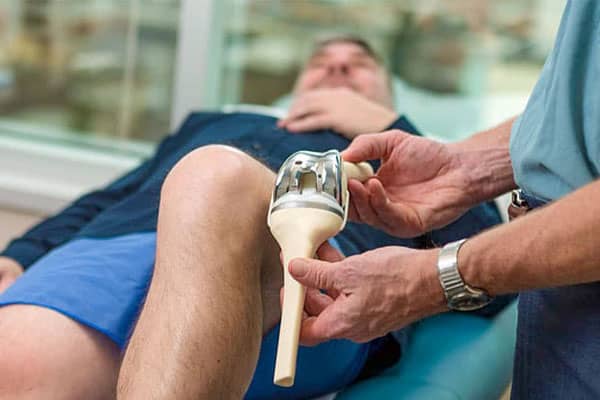
Today, with the change in human lifestyle, diseases and medical problems have also changed. The knee joint is one of the most complex parts of the body, and due to its location, it is subject to severe damage and trauma. Pains and discomforts related to the knee joint have become very common in recent years, but fortunately, with the advancement of medical science along with the knowledge of making effective prostheses, knee replacement (knee arthroplasty) has become one of the most successful surgeries.
- What is knee joint replacement?
- Who is a suitable candidate for knee replacement?
- What is the purpose of knee replacement surgery?
- What is the reason for knee joint replacement?
- How to perform a knee replacement:
- Is the result of knee joint replacement permanent?
- Types of prostheses used in knee replacement:
- Different types of knee replacement surgery:
- At what age can knee replacement surgery be performed?
- Can rickets or varus surgery be performed at the same time as a knee replacement?
- Is it necessary to see a dentist before knee joint replacement?
- What are the complications of knee replacement?
- What are the benefits of knee joint replacement?
- What is the care after knee replacement?
- What is the recovery period after knee joint replacement?
- What is the duration of treatment and recovery after the operation?
- What is the pain after the operation?
- Hip replacement takes several hours.
- Leg swelling after hip replacement surgery.
- Lameness after hip replacement.
- Laser knee replacement.
- What is the alternative to knee joint replacement?
- Exercise and physical therapy after surgery.
- The best knee replacement surgeon in the cities of Tehran and Shiraz.
- Cost and price
1. What is knee joint replacement?
The presence of soft and elastic cartilaginous tissue at the end of the bone, i.e. the location of the joint, facilitates its movement. But as a result of the gradual destruction of the cartilage, friction increases and eventually leads to bone wear and severe pain in the knee area. In these cases, knee joint replacement by an orthopedic surgeon will help improve the patient’s condition.
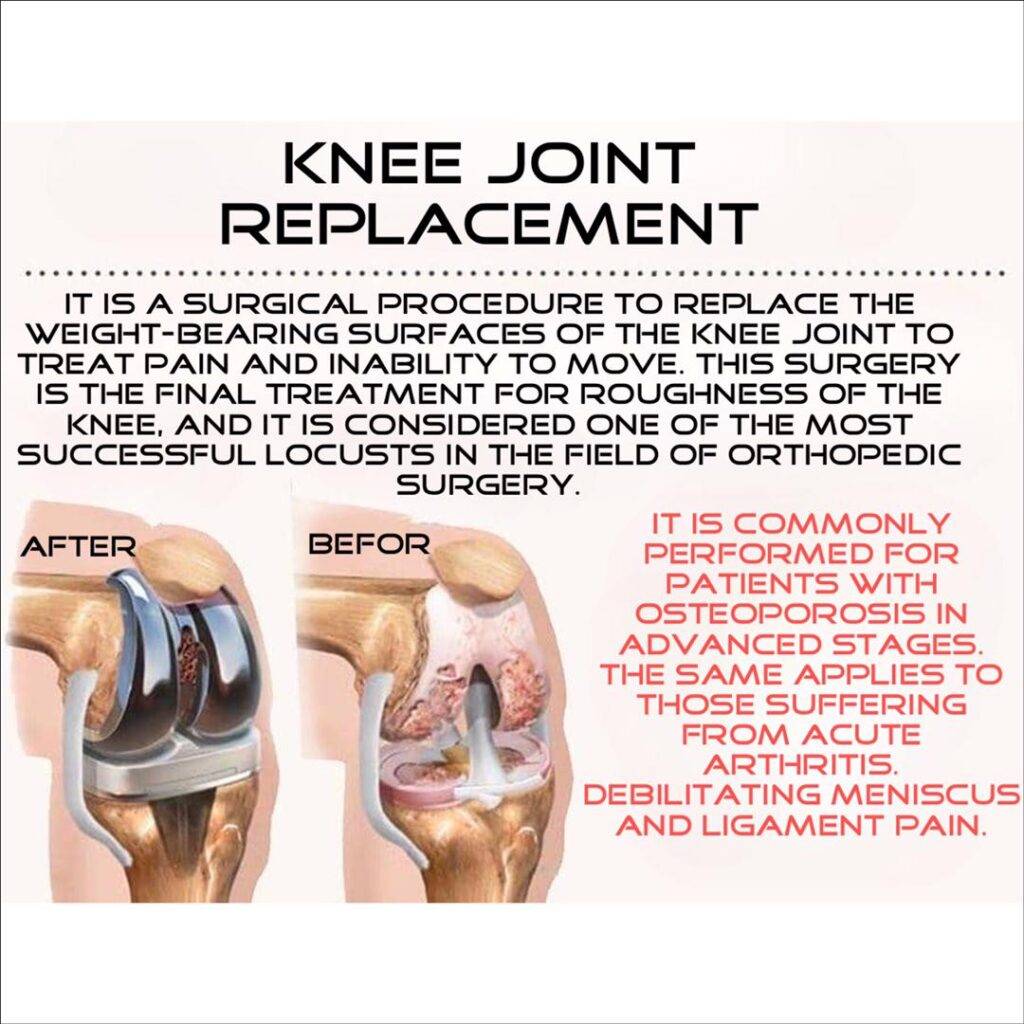
2. Who is a suitable candidate for knee replacement?
Joint replacement, especially the knee and hip joints, is one of the most successful surgeries in the world. However, orthopedists start non-surgical treatments such as physical therapy and medications in the early stages. In some of these people, initial treatments have no effect and normal function of the knee does not return. Also, the pain in the knee area continues at all times until rest time.
Based on this, people who are prime candidates for knee replacement surgery have the following complications:
- Those who feel severe and continuous pain in the knee.
- Those with limited mobility.
- Those whose knees are disfigured.
- Those who suffer from knee pain all the time even when resting.
- Those who were not affected by non-surgical treatment.
3. What is the purpose of knee replacement surgery?
Wear of the knee joint causes the bones to move closer together and their contact with each other greatly reduces the knee’s range of motion. In addition to the lack of daily activities such as climbing stairs, the patient suffers from severe pain in the knee area. Replacing the knee joint in these people eliminates the pain resulting from wear, rheumatism, joint destruction, and knee arthritis, and after a short period, the patient returns to his daily activities.
4. What is the reason for knee joint replacement?
The main reasons for knee replacement are cartilage loss, joint wear and tear, inflammation, and ultimately the ineffectiveness of non-surgical treatments such as physical therapy, special exercises, and oral medications. At this stage, the orthopedic doctor helps to improve the patient’s condition by performing surgery and using special prostheses, and after the recovery period, the knee pain disappears completely. But what is the cause of cartilage loss and bone erosion?
- Knee injury and its complications: The knee joint is often injured as a result of unexpected events such as car accidents.
- Rheumatoid arthritis (rheumatism): or rheumatoid arthritis, is an autoimmune disease in which the immune system attacks the lining of the joints and causes inflammation.
- Arthritis: Loss of cartilage causes bones to rub against each other, causing inflammation and severe pain.
- Osteoporosis: With age, the chance of fractures and osteoporosis increases, and in some cases causes the loss of the knee joint.

5. How to perform a knee joint replacement
Fortunately, a large percentage of knee replacement surgeries have been successful, and artificial joints have been effective in improving a person’s condition for many years and helping patients return to normal life. Total knee arthroplasty (TKA) is performed as follows:
Anesthesia: One of the methods of general anesthesia or local anesthesia is chosen based on the anesthesiologist’s diagnosis.
First, by making a small incision in the area of the knee joint, the orthopedic surgeon gets access to the inner regions and bones of the joint area.
In the next step, the damaged areas (cartilage and articular surface of the femur and tibia) are removed with special surgical tools.
According to the amount and type of damage in each patient, the doctor replaces the damaged joint with special implants and prostheses.
The implant is made of metal and plastic, and at this point it is attached to the thigh and tibia bones by a material called “bone cement”. Also, given the patient’s condition, the doctor may choose the method of biological fixation to attach the bone to the artificial joint.
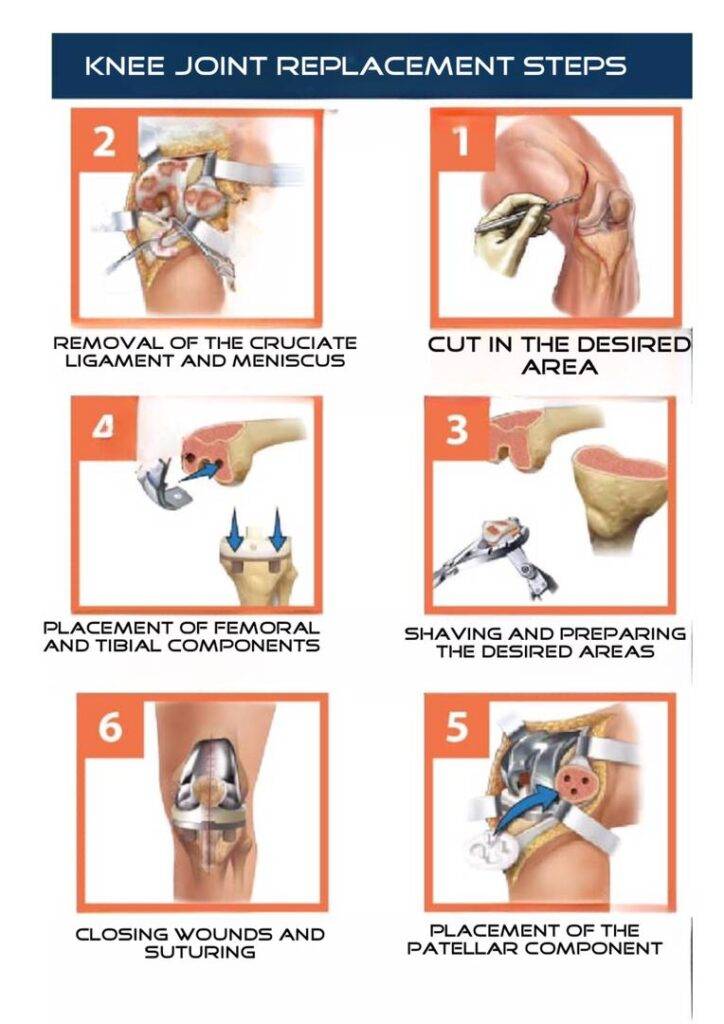
6. Is the result of knee joint replacement permanent?
Knee replacement surgery will play an important role in improving the patient’s condition. But in order to obtain the best results from the operation and the maximum durability of the prosthesis (about 20 years), it is necessary to perform the following series of actions:
- See the best doctor for knee replacement.
- Perform the necessary physical therapy before surgery to strengthen the muscles.
- Surgical technique and physician knowledge and experience.
- The type of suit and its manufacturer.
- Convalescent care (eg, physiotherapy and relaxation).
- Continuous care of the patient with the prosthesis (how to sit and not put pressure on the knee).
7. Types of prostheses used in knee replacement:
Knee joint replacement is performed by placing prostheses in the damaged area, and the doctor examines the patient’s condition, including age, weight, health status, type of activity, and the severity of the joint injury; He will choose the most suitable type of prosthesis. Prosthetics are divided into 4 types according to gender:
- Ceramic on plastic.
- Ceramic upon ceramic.
- Metal on plastic.
- metal on metal.
The prosthesis used in knee replacement surgery consists of 3 parts:
- The part related to the thigh bone (femur).
- The part related to the shinbone (tibia).
- The part related to the kneecap (patella).
8. Different types of knee replacement surgery:
The orthopedic surgeon considers the condition of the affected knee joint in the three main parts of the knee, that is, medial, lateral and patellar; He will choose one of the types of surgeries to help improve the patient’s condition and replace the knee joint.
- Partial knee replacement surgery: This type of surgery can be performed at different ages and is chosen by the doctor depending on the health of the joint components such as ligaments and the degree of damage to different parts of the knee.
- Total knee replacement surgery: This type of surgery is most often performed by replacing the superficial portions of the end of the femur, below the shinbone, or replacing the lower surface of the kneecap.
9. At what age can knee replacement surgery be performed?
Studies show that the most appropriate age for knee joint replacement is 60 to 80 years. The age of the patient is one of the main determinants for performing the surgery. Normally, doctors do not recommend surgery for people under 50. But in general, the patient’s condition, pain and disability caused by knee problems will be effective in the doctor’s decision.
10. Can rickets or cross leg surgery (bowed legs) be done at the same time as a knee replacement?
Yes. In such special cases, the technique and experience of the doctor is very important, who will make the final decision given the circumstances. Fortunately, Dr. Sedagat has a high level of experience in this field and has hundreds of successful experiences in simultaneous knee replacement with straight leg surgery and cross leg surgery in his portfolio.
11. Is it necessary to see a dentist before knee joint replacement?
Yes, it is necessary to ensure the health of the teeth before the operation, otherwise the infection will spread to the surgical site and cause problems.

The picture of the parts of the artificial joints of the knee
12. What are the complications of knee replacement?
Although the risks of this procedure are lower than other surgical procedures in humans, there is still a possibility of complications. But the doctor’s approach, choosing the right size and type of prosthesis will reduce complications:
- The occurrence of minor infections at the surgical site, which can be easily resolved by taking antibiotics and maintaining good hygiene.
- The occurrence of deep infections in the joint area: In these cases, surgery is usually performed again.
- Damage or cracking of the surrounding bone: It may occur during the operation.
- Pain in the prosthetic joint area: This pain occurs due to loosening of the prosthesis at the surgical site.
- Dismantling and loosening the prosthesis: It is possible for the prosthesis to come out of the joint with the bone, and in some cases it can be repaired without the need to repeat the operation.
- The presence of a blood clot at the site of surgery: It is one of the most common complications of knee replacement surgery, which can be easily resolved by prescribing the necessary medications.
- Restriction of movement in the area of \u200b\u200bthe knee prosthesis (restriction in the type of sitting, etc.).
- Damage to vessels and nerves around the surgical site.
- The difference in the length of the legs relative to each other.
13. What are the benefits of knee joint replacement?
One of the most important benefits of knee replacement is the relief of severe pain, which was actually the main reason for going to the doctor and having the surgery. In the next step, the improvement of the patient’s physical condition leads to his return to daily activities, which in itself affects the mood and level of satisfaction of the person.
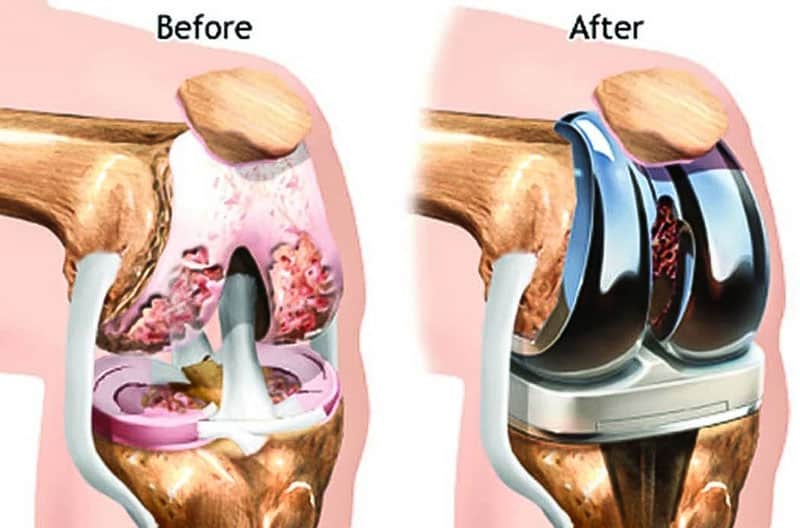
14. What is the care after knee replacement?
- Timely use of prescribed medications (painkillers, antibiotics and drugs that prevent blood clots).
- Take complementary medications such as iron tablets and vitamins (consult your doctor).
- Prevent water and moisture from getting into the wound while showering.
- Not using stairs for the first few months after knee replacement.
- Returning to work on the doctor’s advice (at least two months after the operation).
- Accurately and timely perform sports movements at home.
- Attending physical therapy sessions continuously.
- Consumption of nutrients, especially fruits and vegetables.
- Position the seat of the chair higher than usual.
- Maintaining hygiene and taking care of the surgical site.
- Accuracy in walking, sitting and sleeping.
- Daily walks in the house a lot.
- Start driving with a doctor’s advice.
- Replace bandages in a timely manner.
15. What is the recovery period after knee joint replacement?
It is necessary for the patient to rest and refrain from strenuous physical activities during the recovery period. However, the speed of recovery is not the same for everyone. If approved by the doctor, the patient can return to normal activities after 4 to 6 weeks. It is necessary to pay attention to the following points during the recovery period:
- Use a cane or walker when walking.
- Do not put pressure on the knee when lifting.
- Do not put pressure on the knee while sleeping.
- No dangling of the leg while sitting.
- Not using stairs.
16. What is the duration of treatment and recovery after the operation?
A large percentage of patients (approximately 98%) can return to their professional activities after a short period of time after knee replacement, depending on the type of activity and the job they perform.
17. What is the pain after the operation?
Feeling pain after knee joint replacement is normal and will disappear after the recovery period. However, in a number of patients, swelling, fever, and redness of the surgical site increase with increasing pain and cause irritation to the patient. Therefore, it is necessary to discuss this problem with the doctor immediately so that further measures can be taken if necessary.
18. How long does a hip and knee replacement take?
Total hip and hip replacement surgery usually takes one to three hours. After surgery, the surgeon places tubes at the site of the operation to drain the excess blood remaining at the site of the operation or that may collect in the first hours after the operation, and it is transferred outside the body.
19. Leg swelling after hip replacement surgery.
Leg swelling can be a potentially serious symptom after hip and thigh replacement surgery. Because it can indicate the presence of blood clots in the leg veins.
Blood clotting in the deep veins of the leg is a possible side effect of hip replacement.
Blood clots are a possible side effect of hip replacement surgery. These clots become dangerous when they break away from the blood vessel in which they formed and enter the patient’s heart and then the pulmonary arteries through the bloodstream.
The arrival of these clots in the lung is called a pulmonary embolism. These clots can block the pulmonary capillaries, resulting in severe disruption of the hemodynamics of the heart and lung, and in severe cases may lead to death of the patient.
Although serious complications of pulmonary embolism can occur without the formation of clots in the veins of the leg (and due to the formation of clots in the thigh or pelvis), the appearance of symptoms of clots in the veins of the leg is a warning sign because in this case the probability of developing a pulmonary embolism is very high .
The reason why leg swelling is so important is due to the fact that one of the symptoms of blood clots in the leg veins is leg swelling or edema.
20. Lameness after hip replacement.
With the destruction of the hip joint in the hip region, the patient experiences pain in this area and, as a result, becomes lame when walking. Because the patient tries to put less pressure on the affected limb while walking and moving to feel less pain, and as a result he cannot walk well and becomes lame.
This pain goes away entirely or largely after joint replacement surgery.
21. Laser knee replacement
Laser knee joint replacement is a safe treatment method, after the operation the patient will feel less pain. Also, the use of the laser in a high-precision manner causes less damage to the surrounding tissues, and the natural joint of the patient will be preserved as much as possible.
- There is less damage to the nerves around the surgery.
- The patient will still be able to benefit from the stem cell technology.
- No bleeding.
22. What is the alternative to knee joint replacement?
As mentioned, due to the severity of the destruction of the knee joint, non-surgical treatments are not effective in a number of patients, and the doctor will decide to replace the knee joint after examining the person’s condition, especially his age. But if the age of the knee joint is much greater than the age of the patient’s birth certificate and physical therapy and drug therapy have no effect, what alternative to surgery will the doctor consider?
- Intra-knee injections are performed for patients between the ages of 40 and 50. The injection makes the joint slippery and prevents friction.
- Hyaluronic acid: improves knee function and makes bones and cartilage move smoothly. Among the complications of this technique, we can mention: The possibility of causing sensitivity, swelling and pain in a number of patients.
- Cortone: Cortone injection is not a definitive treatment and will only be effective by reducing pain and inflammation in the knee area for several months.
Of course, the use of alternative methods of operation is diagnosed according to the patient’s condition and the doctor’s diagnosis
23. Sports and physical therapy after surgery
I started doing the exercises recommended by the attending physician the day after the surgery, and it is necessary for the patient to attend all physical therapy sessions on time to strengthen the leg muscles and increase the efficiency of the knee joint replacement.
24. The best knee replacement surgeon in the cities of Shiraz and Tehran
If you are suffering from knee pain and after consulting a knee specialist you come to the conclusion that you need to undergo surgery, then you should go to a good and experienced knee specialist for knee replacement surgery.
An experienced specialist in this field, Mr. Shahristani is well known not only in Tehran but also in the country by performing thousands of difficult, joint and simultaneous operations.
Mr. Sadaqat is considered one of the best doctors in this field in Shiraz.
25. Knee replacement surgery cost
The cost of the operation varies according to the patient’s condition. People covered by basic and supplementary insurance incur a lower cost. In this way, surgery costs include:
- The ability and experience of the specialist doctor.
- Hospital equipment where the surgery is performed.
- Preoperative preparations such as radiographs and tests.
- Participate in physical therapy sessions to prepare for knee replacement surgery.
- A cane or walker that the patient needs for at least a month after surgery.
- Medicines prescribed by the doctor after surgery
To find out the price of knee replacement or any other operation such as hip replacement that you are considering, contact us through our WhatsApp numbers or our Instagram, if you have any questions, ask in the comments section at the bottom of this page, our doctors will answer you personally at the first opportunity.
Read more about other articles in the medical fields (Cosmetics and Medical)
- Hair Transplant in Iran
- Rhinoplasty (Nose Job in Iran)
- Face Lift Surgery (Rhytidectomy) in Iran
- Breast Lift in Iran
- Chin Surgery in Iran
- Liposuction in Iran
- Tummy Tuck (abdominoplasty) in Iran
- Butt augmentation (Brazilian butt lift) in Iran
- Breast Augmentation in Iran
- Eye Care in Iran
- Cataract Surgery in Iran
- Diabetic Retinopathy Treatment in Iran
- Heart Surgery in Iran
- Knee replacement in Iran
- Eyelid Surgery In Iran
- Safe Abortion in Iran

